August. 2025
For many organizations, especially in highly regulated industries like financial services, digital transformation efforts are often complex, costly, and difficult to steer. With overlapping systems, increasing pressure to adopt AI, and the constant demand to reduce costs, businesses are frequently left with more questions than answers.
Where should we start?
Which applications are redundant?
How can we optimize operations without compromising performance or security?
What’s the impact of our AI initiatives across business processes?
If these questions sound familiar, you’re not alone. At Link, we’ve seen them time and again across sectors. And our answer is always the same: Enterprise Architecture (EA) is the key.
The missing link: Visibility and governance
It’s true that companies begin transformation initiatives with the best intentions. Yet, without a clear view of their current technology landscape or a consistent governance framework, they quickly run into obstacles. From duplicate systems to data silos, legacy applications and technical debt weigh down innovation.
Enterprise Architecture addresses this head-on by:
- Mapping business processes to the technologies that support them
- Identifying dependencies, risks, and redundancies
- Creating a unified, data-driven view of the application landscape
- Providing the foundation for strategic decision-making, not guesswork
This holistic approach enables leaders to make informed choices: What to retire, what to consolidate, where to invest, and how to plan migrations. All while ensuring technology aligns with business goals.
Usual challenges (and how EA solves them)
Let’s look at three common challenges we help clients tackle:
- Cost-cutting without chaos – When budgets tighten, the instinct is to eliminate systems quickly. But without understanding the downstream impact, this can lead to service disruptions or regulatory risks. Enterprise Architecture helps organizations see the full picture and decommission applications safely.
- AI without alignment – Generative AI and LLMs are powerful, but only if implemented with a clear purpose and governance. EA ensures AI adoption is aligned with business priorities and integrated into existing systems securely and effectively.
- Transformation without direction – With dozens or even hundreds of ongoing digital initiatives, fragmentation is a real threat. Enterprise Architecture acts as a central compass, guaranteeing all efforts point toward the same strategic north star.
Why a common language matters
A major hurdle in enterprise-wide transformation is the lack of a shared vocabulary between IT and the business. Misalignment leads to miscommunication, delays, and inefficient decision-making.
This is where industry-standard frameworks come in. At Link, we help organizations implement models such as:
- BIAN (Banking Industry Architecture Network) – Designed for the financial services industry, it offers a service-oriented blueprint to map and align banking operations.
- TOGAF (The Open Group Architecture Framework) – A high-level framework for designing, planning, implementing, and governing enterprise architecture.
- TBM (Technology Business Management) – Provides a financial view of IT, helping organizations align technology spend with business value.
- IT4IT – Offers a standard reference architecture for managing the full IT value chain.
By adopting these frameworks, organizations can create a common language for transformation, which facilitates collaboration, accelerates time-to-value, and ensures everyone (from architects to business leaders) is on the same page.
A real-world example
One of the most impactful examples of enterprise architecture in action is the ongoing project with Caixa Geral de Depósitos (CGD), Portugal’s largest bank.
Faced with the need to rationalize over 700 legacy applications, CGD partnered with Link to modernize its Enterprise Architecture, reduce operational costs, and improve time-to-market for new services.
The team chose the BIAN framework as a reference model for its structured service domains, and implemented SAP LeanIX, a powerful EA platform, to drive transparency and collaboration.
How Link helped:
- Mapped the full application landscape against BIAN service domains
- Identified overlaps, outdated components, and opportunities for consolidation
- Built a clear roadmap for transformation, using LeanIX to track and visualize progress
- Set the foundation for future expansion to APIs and further digital integration
The result? A more agile, cost-efficient, and strategically aligned IT ecosystem. One that’s ready to support CGD’s innovation roadmap. As Paulo Pereira, Architecture Director at CGD, stated: “Tackling a project of this scope, in tranches that make sense for the business’s goals, might not have been possible without the underlying understanding provided by the BIAN Service Domain model and SAP LeanIX platform.”
Enterprise Architecture is more than diagrams
Too often, Enterprise Architecture is mistaken for a documentation exercise. In reality, it’s a strategic discipline, a way to bring clarity to complexity and ensure that every technology decision serves a clear business purpose.
At Link, we combine technical expertise, domain knowledge, and the right tools to embed EA into our clients’ decision-making processes. Our services typically include:
- Current-state architecture assessments
- Application portfolio rationalization
- Data-driven impact analysis
- Framework implementation (BIAN, TOGAF, TBM, IT4IT)
- EA platform setup and configuration (e.g., SAP LeanIX)
- Ongoing support for architecture governance and optimization
Whether you’re just starting out or seeking to scale your EA practice, we help you build the foundation to make confident, future-proof decisions.
Ready to take control of your architecture?
In a world of constant disruption, businesses need more than vision. They need visibility. Enterprise Architecture provides exactly that. With a clear map of your systems, processes, and opportunities, you can reduce costs, accelerate innovation, and build a technology strategy that supports long-term growth.
Get in touch to learn how we can support your transformation.



